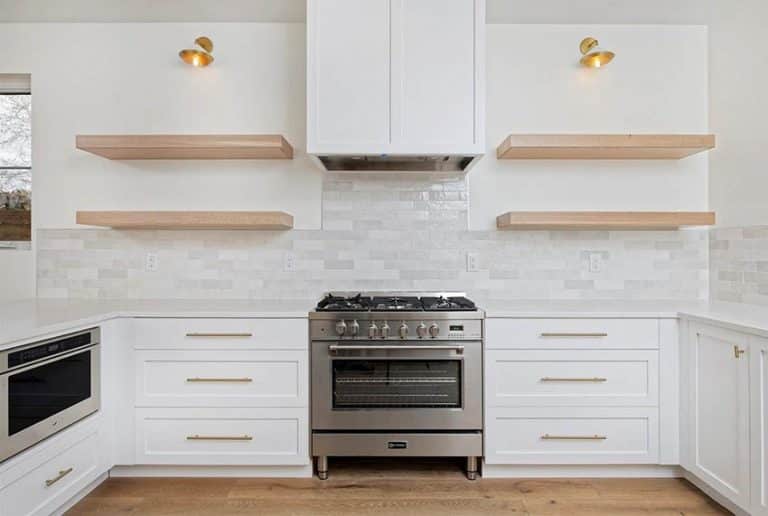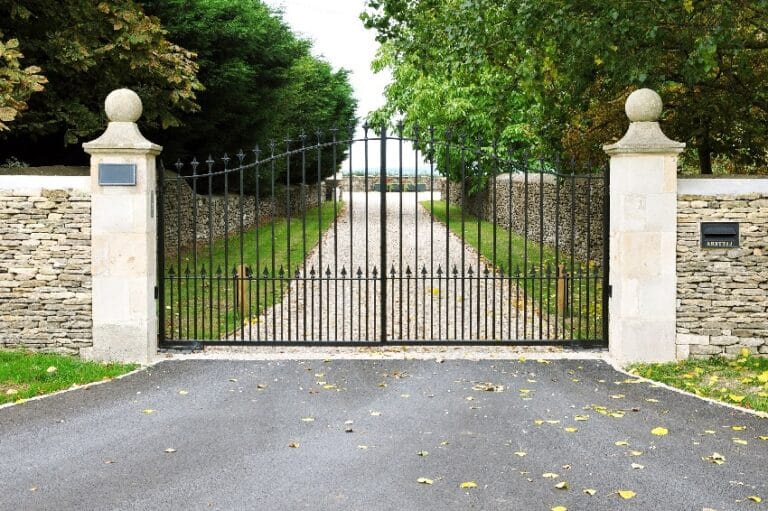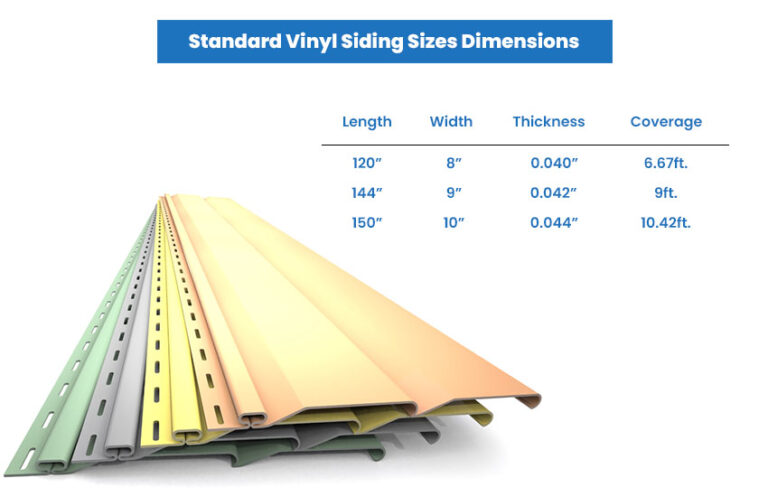Mold In Crawl Spaces (Causes, Prevention & Removal Tips)
Mold in crawl spaces or elsewhere is a serious problem for homeowners. Mold affects people’s health, so mold growth is not an issue to be taken lightly. Mold can also weaken the integrity of wooden structures and cause them to rot and decay.
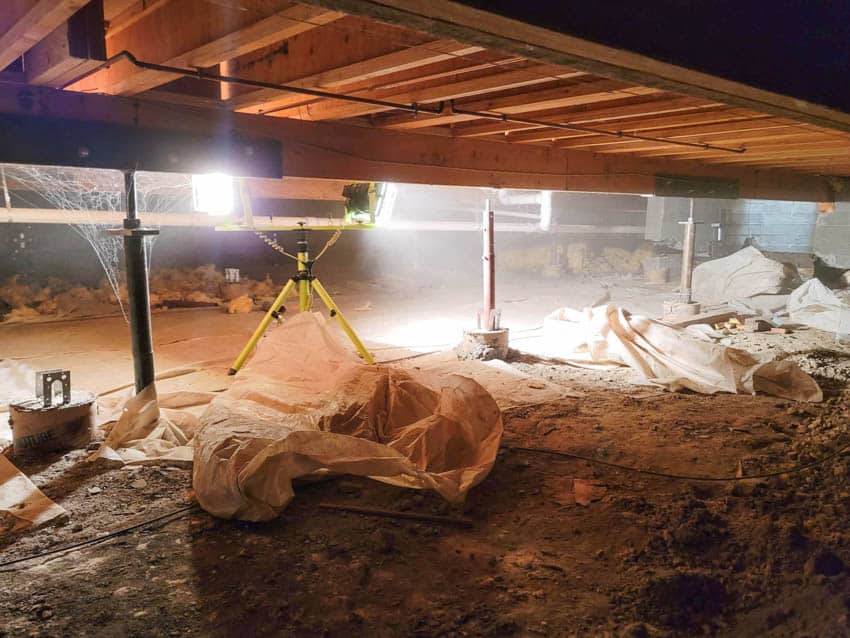
Your home’s crawl space is especially vulnerable to a mold infestation. This prefers to grow in damp, dark areas – making your crawl space a welcoming environment for a mold infestation. Since mold in crawl spaces can be a hazard to your home’s structural integrity and your family’s health, it’s essential to know how this organism grows in crawl spaces and the types of mold found in crawl spaces.
Mold in crawl spaces needs to be detected and dealt with as quickly as possible, so we will also explain how you can prevent mold in your crawl space and – if you find mold – how to remove it safely before it causes irreparable damage.
What Causes Mold In Crawl Spaces?
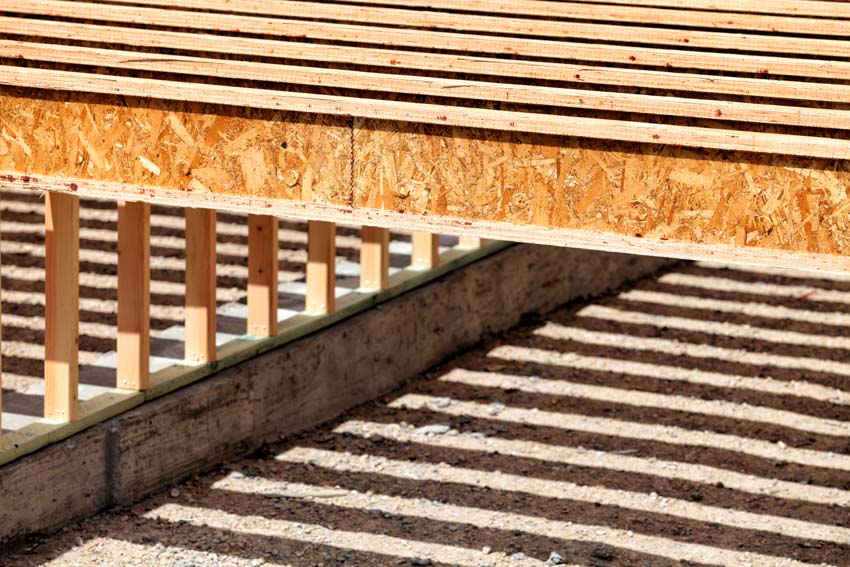
Molds in crawl spaces are caused by accumulated moisture, and it’s a sign that you have a moisture problem, either from a leak or gathered condensation. While it can be found almost anywhere in a home, moldy spaces can cause concern because they’re often “hidden” and difficult to spot.
The first sign of a mold problem in your home is a musty smell emanating from a certain area or permutating a room. You might also find a white powdery substance dusting the nearby locations.
It enters a home through openings, such as doorways, windows, vents, and HVAC systems. Humans and pets can also bring its spores into your home. When the spores find a moist or wet surface, they grow and spread, becoming an infestation.
Crawl spaces are an especially rich ground for mold to infest as there’s usually a lot of organic material inside. If your crawl space is made of wood or has wood fixtures and these get moist, mold can quickly grow on them. Molds can also grow on torn insulation material or most types of wallpaper, drywall, upholstery, or carpet – all it needs is moisture.
Reasons Mold Grows Under The House

Crawl spaces are, unfortunately, great places for molds to grow. There’s a lot of organic material there, from wood to soil, paper, and cloth. Crawl spaces are also “hidden,” so moisture and damp patches may go unnoticed for a long time.
Since a crawl space is located at the lowest part of your home, the area often has high moisture and humidity levels. If there are leaks in your home, some water will drip down into the crawl space. If there is a flood or you experience a lot of rain in your area, your crawl space will also be affected.
The soil and dirt underneath a crawl space can also be part of the problem. Moisture from soil typically evaporates into the atmosphere, but in your crawl space, it gets trapped and condenses onto the walls and subflooring. Damp patches of wall or flooring provide an excellent environment for this organism to grow and thrive.
To prevent a mildew infestation in your crawl space, you must regularly inspect it for signs of mildew growth and any damp patches where it could grow. A thorough check at least twice a year can help you detect and deal with small growth areas before they get out of control.
If you live in an area with heavy rainfall, check your crawl space after the rain or if your area experiences flooding. Ensure that the weather doesn’t result in water leaking into the space.
Types of Mold You Can Find In Crawl-Spaces

Molds are fungi; they reproduce via spores, which can spread by floating in the air. Its spores are found in almost any indoor environment, but they thrive in warm and moist environments. The minute a spore lands in a damp spot in your home, it will begin to feed and grow.
The different types of molds grow on various substances, such as wood, paper, glass, plastic, and fabric—all of these materials can be found in crawl spaces.
As molds grow and spread, they digest the material they are on. Most molds feed on cellulose, ruining the material’s structural integrity as they grow. This is how mold in crawl spaces can damage your home.
There are about 300,000 different types of molds in the world, but the three most common types in crawl spaces are black, white, yellow, and green molds. Each of these types of molds in crawl spaces can affect your health and the structural integrity of your home.
Black Mold
This is a dark gray or greenish type of mold that can be either fuzzy-looking or powdery. This is the deadliest type found in crawl spaces with regard to human health. Black mold releases mycotoxins, toxic compounds that can result in allergic reactions and respiratory problems when inhaled by humans.
Black mold prefers to grow in a high cellulose content material, such as wood, fiberboard, and paper. It feeds on the cellulose, weakening the material and causing it to rot.
White Mold
You can find this either exposed soil or wooden joists in crawl spaces. It is a fuzzy, whitish growth that stands in contrast to the brown of the wood. This type also releases mycotoxins, but in lesser quantities than the black molds.
It also feeds on cellulose, making an infestation of this species on wood particularly problematic for homeowners. This infestation on wooden floors, beams, or ceilings weakens these structures, causing damage to your home.
Yellow Mold
Also known as “house-eating mold,” this feeds on organic materials like wood. They grow on wooden structures, feeding on the wood and causing the whole structure to deteriorate and decay.
This organism tends to be dark yellow or even golden and grows on damp spots on wood, especially in areas where the humidity is high. Yellow mold “eats” the wood quicker than other types of fungi and can lead to dry rot or wood decay. This is why this kind of infestation is considered the most damaging type for its effect on a building’s structural integrity.
Green Mold
You’ve most likely seen types of green mold growing on fruit, bread, or other types of food, but it can also grow in wet crawlspaces under the home. Green mold is a generic term encompassing many different types of fungi of different shades of green.
The three primary types of green mold are Aspergillus, Cladosporium, and Penicillium. All types of molds, including the green one, can cause health problems, including allergy attacks, asthma, and respiratory system issues.
Testing is the best way to determine the type of mold in your home. No matter what the color or type, molds in your home and your crawl space can cause structural damage and bring down its value.
An extensive infestation can leave your home smelling musty and sour. Since fungi damage organic material – including wood – they can weaken and destroy your walls, most types of flooring materials, and even the ceilings.
Another reason to worry about fungi in your crawl space is that spores and fungi infestations can harm human health. This is especially true in those with weakened immune systems.
How Can Mold Affect Your Health?
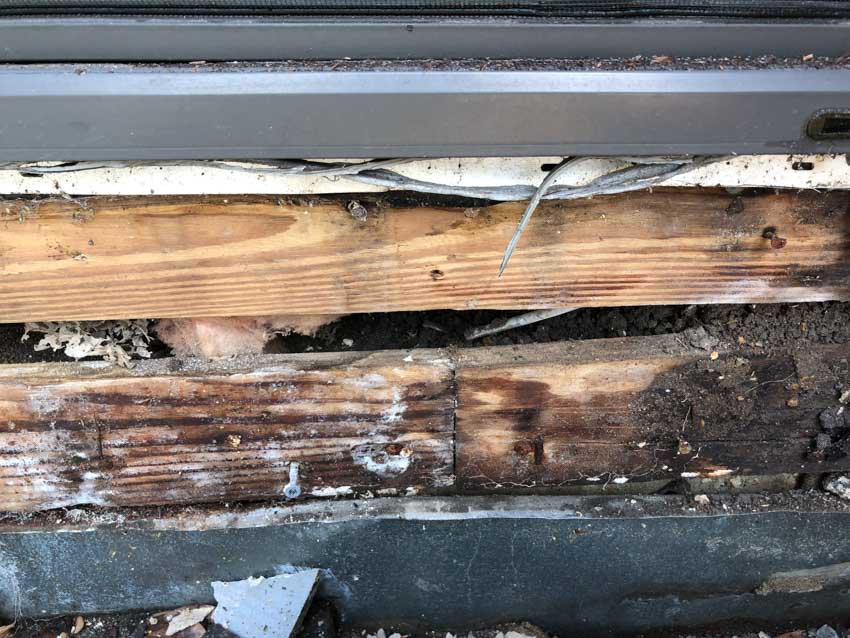
Regardless of what type of fungi is in your home, they all release various spores into the air. Inhaling the spores causes an allergic reaction in most people, and the intensity of the reaction will depend on the person and their general health situation.
An allergic reaction to this organism is called “mold disease,” and the symptoms are:
• Shortness of breath
• Chronic or persistent coughing
• Stuffy nose
• Recurring sinusitis
• Red or watery eyes
• Skin rashes
People with allergies or asthma might be more badly affected by exposure to spores; it can even trigger an asthma attack.
People with weak immune systems or who suffer from underlying respiratory diseases might also be more sensitive to mildew. Severe sensitivity to it can lead to difficulty breathing, and there is some evidence that it can lead to bronchial tract infections and chronic coughing and increase susceptibility to hypersensitivity pneumonitis.
While white mold is considered a little less toxic than the black variety, a type of white mold called Aspergillus can cause severe health problems in people with weakened or compromised immune systems.
While most people will breathe in Aspergillus spores and get a slight allergic reaction, it can cause a reaction called Aspergillosis in those with weak immune systems.
There are three different types of aspergillosis:
• Allergic bronchopulmonary aspergillosis: affects the lungs and causes breathing problems
• Allergic Aspergillus sinusitis: affects the nose and can cause headache
• Aspergilloma: also called “fungus ball,” this is a bad cough that could produce blood and breathing problems.
• Chronic pulmonary aspergillosis: persistent breathing problems, coughing, and weight loss.
How to Prevent Mold In the Basement
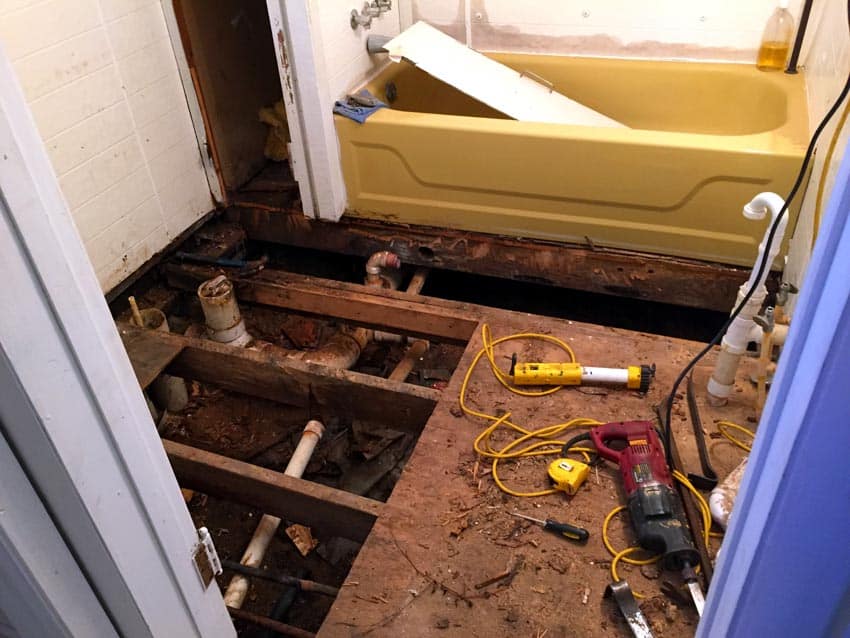
The first and best way to prevent mildew in the crawl space under a house is to inspect the space for mildew and moisture buildup regularly. If your crawl space doesn’t provide the right environment for mildew to grow and thrive, then you will avoid harmful moldy infestations.
As we’ve been saying, spores need a moist area to grow and spread, so the first thing you need to do is ensure your crawl space and anything contained within stay dry. Regularly inspect for water leaks and spots of condensation.
You should also make sure to regularly inspect any pipes in and around your crawl space. Repair any leaking pipes immediately to ensure moisture doesn’t accumulate in your crawl space. Make sure to repair any cracks in your crawl space’s walls, which could also lead to leaks.
After experiencing heavy rains, inspect your crawl space for wet or moist areas. Clean and dry these areas as soon as possible and try to determine where the water came from; there could be a leak that you need to fix. If you’ve experienced flooding, drain, clean, and dry your crawl space immediately.
How To Remove Mold In Crawl-Spaces Under The House

The first thing you need to do to remove molds in the crawl space under your house is to find the source of your moisture problem. It needs moist organic material to grow, so getting rid of moist, damp patches will also get rid of the molds.
After you’ve figured out how your crawl space keeps getting wet, take the steps needed to fix the problem. Seal any wall cracks where rain can come in, repair any leaky pipes, etc.
The second thing to do is carefully remove moldy materials in your crawl space. You can’t just roll up your sleeves and remove items; you must take precautions and protect yourself.
Moving moldy material can cause it to release spores, which you might inhale and make you sick. At this point, you should consider calling in a professional mold removal company. They have the materials, gear, and expertise to remove infestations safely.
However, if you’re going to do it yourself, make sure that you wear proper protective equipment, a respirator, gloves, and goggles. You should also wear long-sleeved clothing and long pants that you should remove and launder right after.
If you can’t remove and discard the moldy material, you should clean it. Scrub the moldy surfaces with a stiff brush. Use a mixture of hot water and soap or detergent. Make sure that whatever cleaning material you use doesn’t have ammonia. Rinse and dry it thoroughly.
Wipe down the cleaned surfaces with a disinfectant made of bleach and water. For small areas, use about five cups of water and half a cup of bleach. For more extensive areas, like your crawl space’s walls or floor, use ½ a gallon of bleach for every 5-gallon pail of water.
Mold Removal Tips for Your Home

The best way to remove mildew in crawl spaces is to control its growth in the area. While you can’t totally prevent spores from entering your home or your crawl space, you can ensure that your crawl space doesn’t provide a suitable environment for fungi to grow and cause an infestation.
We’ve already told you how to DIY clean your crawl space after an infestation, but here are a few different fungi in subflooring space removal tips.
• A dehumidifier can help remove moisture in the air. After cleaning your subflooring space, place a dehumidifier in the area to allow your crawl space to dry quickly. Occasionally, you can connect a whole house dehumidifier to your crawl space to reduce moisture buildup.
• Humidity gauges can help you control the mildew growth in your subflooring space. Its growth usually occurs in areas with 55% or more humidity.
When the humidity levels in your subflooring space are reaching these levels, try running a dehumidifier until the humidity levels go down to acceptable levels.
• To prevent moisture from accumulating in your underfloor space, consider installing a vapor barrier. This will effectively “water-proof” the area, keeping it from getting damp or wet.
• Make sure that anything that is stored in your underfloor space is completely dry.
• While hard surfaces, such as your floor or walls, should be easy to clean off mildew, absorbent or porous materials – like carpeting or upholstery are not so quickly dealt with.
Fungi can grow and fill the empty spaces of porous materials, so it will be difficult to remove everything. Consider just disposing of them instead of putting them back into the crawl space, which could just trigger another infestation.
• Don’t apply paint to moldy surfaces. It will not kill the fungi, and it is likely just to peel off. Clean the mildew on the surface before painting.
• Try looking for special foaming cleaning products for mildew removal. These products are formulated to remove fungi from surfaces effectively.
• Fix plumbing problems promptly. A small leak in your upstairs bathroom could end up dripping water into your underfloor space.
• Make sure that you properly insulate your pipes. Condensation can form on uninsulated pipe surfaces, which can drip down into your foundation space, creating areas of moisture or dampness where fungi can grow.
• Make sure you have no cracks in your house foundation. Dampness can get into your foundation space space through foundation cracks.
• Check your downspouts. Ensure that they are correctly directing the flow of rainwater away from your home and not into your foundation space.
Consider adding concrete splash blocks, preventing rainwater from pooling around your home’s foundation, and leading to subfloor space flooding.
• Consider hiring a professional mold remediation company to safely and quickly deal with a significant infestation in your underfloor space. The average cost of hiring a mold remediation company to inspect and remove molds from your underfloor space will come to around $1,500 to $4,000, depending on the size of the infestation.
While this may sound expensive, it is safer for your health as they have better training and protective equipment. A professional job might also last longer than a DIY job as you may miss spots that will cause the infestation to flare up again.
See more related content in our article about mold in closet removal tips on this page.


